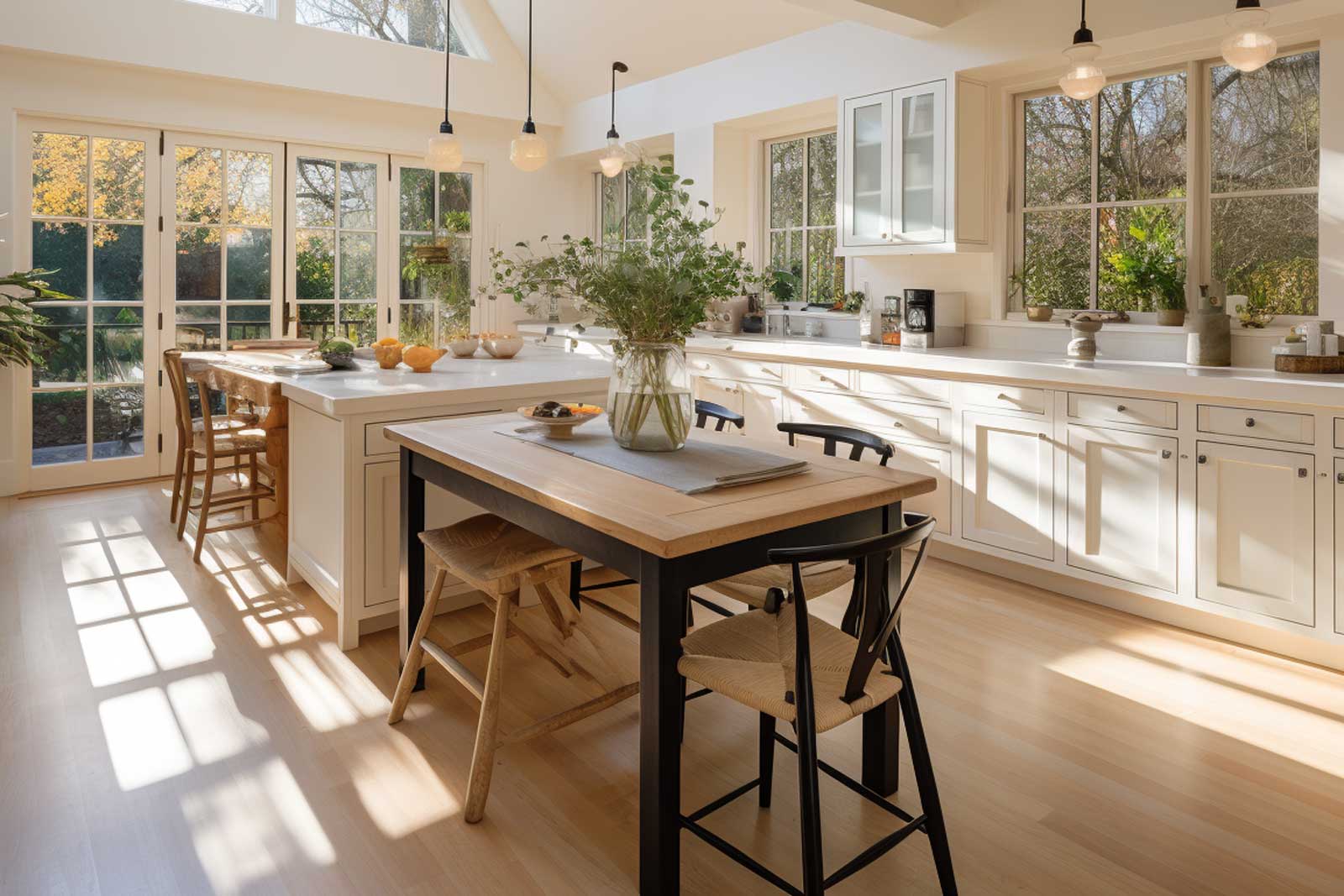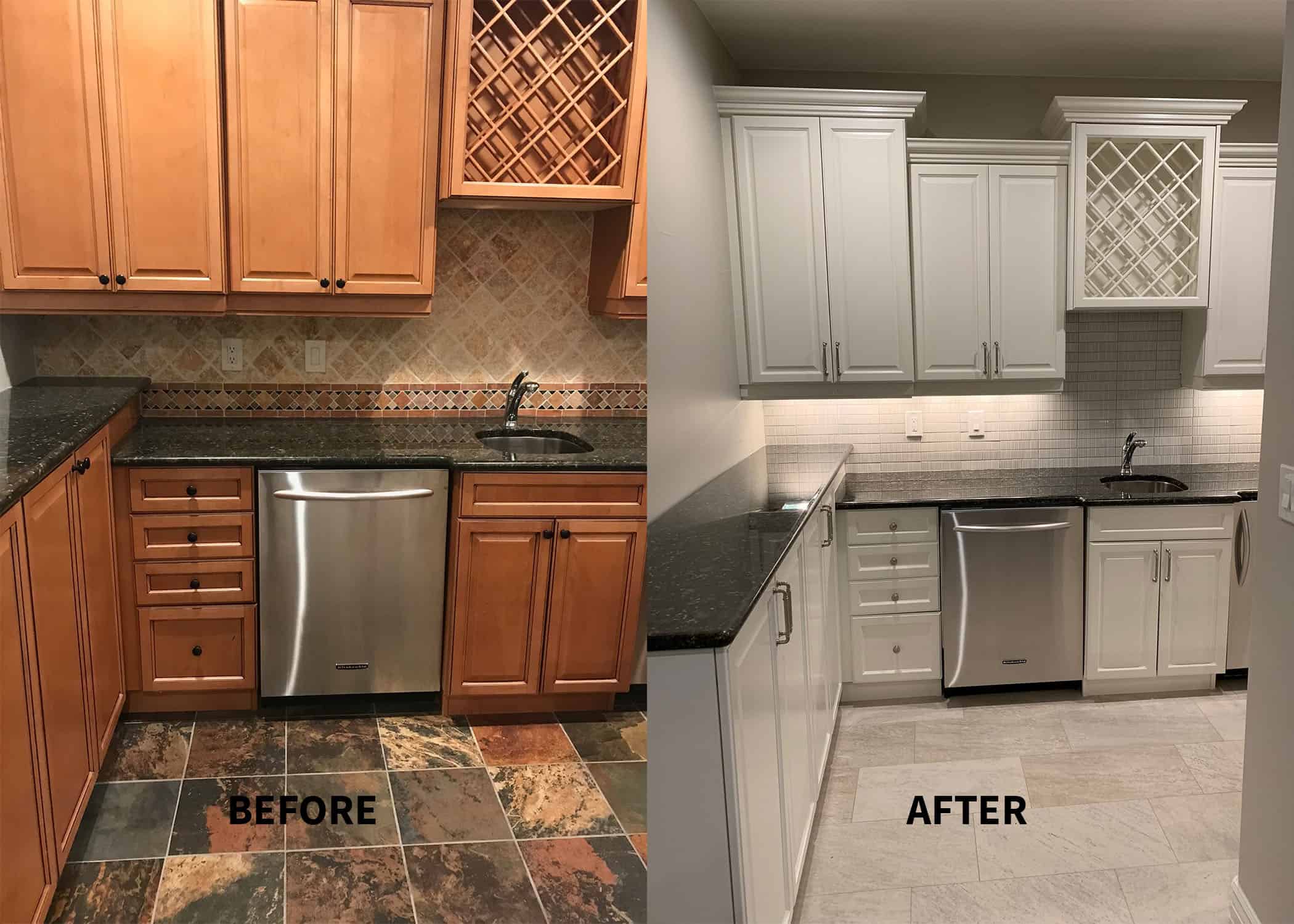Semi-Gloss vs. Satin

Choosing between semi-gloss and satin paint for kitchen cabinets involves careful consideration of durability, maintenance, and aesthetic preferences. Both finishes offer distinct advantages and disadvantages, impacting the longevity and visual appeal of your kitchen’s cabinetry. This comparison will delve into the key differences to aid in informed decision-making.
Durability Comparison of Semi-Gloss and Satin Finishes
Semi-gloss paint boasts superior durability compared to satin. Its higher gloss level translates to a harder, more resistant surface. This makes it ideal for high-traffic areas like kitchens, where cabinets frequently endure bumps, scratches, and spills. For instance, a semi-gloss finish would better withstand the impact of a dropped pan or the constant wiping needed to maintain cleanliness. Satin, while durable, is more susceptible to scratches and scuffs. A child’s toy accidentally brushing against a satin cabinet might leave a noticeable mark, whereas a semi-gloss finish would likely show minimal damage. The increased resilience of semi-gloss makes it a better long-term investment in areas prone to wear and tear.
Cleaning and Maintenance Requirements
Both semi-gloss and satin finishes are relatively easy to clean, but their cleaning methods and recommended products differ slightly due to their varying levels of sheen. Semi-gloss, being more durable, can tolerate stronger cleaning agents. A solution of mild dish soap and warm water, applied with a soft sponge or cloth, is usually sufficient for regular cleaning. For stubborn stains, a slightly more abrasive cleaner, such as a non-abrasive kitchen cleaner, can be used cautiously. Satin, however, is more sensitive to harsh chemicals and abrasive scrubbing. Gentle cleaning with a soft cloth and mild soap is recommended to avoid dulling the finish or causing scratches. Always test any cleaning product on an inconspicuous area first to ensure it doesn’t damage the paint. Avoid using harsh chemicals like bleach or ammonia on either finish, as these can degrade the paint over time.
Visual Differences and Suitability for Kitchen Styles
The most apparent difference between semi-gloss and satin lies in their sheen. Semi-gloss reflects more light, resulting in a brighter, more lustrous appearance. This high-gloss finish can make imperfections more visible, so meticulous preparation is crucial before painting. Satin, with its lower sheen, offers a softer, more subtle look, hiding minor imperfections more effectively. It provides a warm, inviting feel, suitable for a variety of kitchen styles. The visual impact of each finish also influences its suitability for different kitchen designs.
| Sheen Level | Visual Impact | Light Reflection | Kitchen Style Suitability |
|---|---|---|---|
| Semi-Gloss (25-40%) | Bright, lustrous, shows imperfections | High | Modern, contemporary, traditional with bold accents |
| Satin (5-25%) | Soft, subtle, hides imperfections | Moderate | Traditional, farmhouse, transitional, contemporary with a warmer feel |
Choosing the Right Finish for Your Kitchen: Kitchen Cabinet Paint Semi Gloss Or Satin

Selecting the appropriate paint finish for your kitchen cabinets is crucial for achieving the desired aesthetic and ensuring durability. The choice between semi-gloss and satin hinges on several factors, including kitchen style, cabinet color, and personal preference. Both finishes offer excellent washability, making them ideal for high-traffic areas like kitchens, but their subtle differences in sheen significantly impact the overall look and feel of the space.
Kitchen Style and Paint Finish Recommendations
The style of your kitchen significantly influences the best paint finish choice. Different sheens complement various design aesthetics, enhancing the overall visual appeal.
- Modern Kitchens: Modern kitchens often feature clean lines, minimalist designs, and sleek surfaces. A semi-gloss finish works exceptionally well in this context. Its higher sheen creates a sense of sophistication and reflects light beautifully, highlighting the clean lines and modern aesthetic. The reflective quality minimizes the appearance of imperfections, maintaining a polished and contemporary look.
- Traditional Kitchens: Traditional kitchens, characterized by ornate details, rich wood tones, and classic designs, benefit from a satin finish. The softer sheen of satin paint complements the intricate details and warmer tones typical of traditional styles. It provides a more forgiving finish, subtly masking minor imperfections without sacrificing durability.
- Farmhouse Kitchens: Farmhouse kitchens, with their rustic charm and blend of vintage and modern elements, often find a balance with a satin finish. While a semi-gloss could work, the slightly less reflective nature of satin better complements the inherent warmth and texture of farmhouse-style cabinetry. The subtle sheen enhances the natural beauty of the wood without appearing overly polished.
Impact of Cabinet Color on Perceived Sheen
The color of your kitchen cabinets interacts significantly with the paint finish, altering the perceived sheen. Darker colors tend to absorb more light, minimizing the noticeable difference between semi-gloss and satin. Lighter colors, on the other hand, reflect more light, making the difference in sheen more pronounced.
- Light Cabinets: Light-colored cabinets painted with semi-gloss will exhibit a noticeably higher sheen, appearing almost glossy. The same light color with a satin finish will appear softer and less reflective. Imagine a bright white kitchen: the semi-gloss will almost gleam, while the satin will have a more muted, elegant luminosity.
- Dark Cabinets: Dark-colored cabinets, such as navy or charcoal, will show less of a difference between semi-gloss and satin. While a subtle difference in sheen will still exist, it will be less visually striking than with lighter colors. A dark grey kitchen with semi-gloss will still appear rich and deep, but the satin will present a similarly sophisticated, albeit slightly less reflective, finish.
Hypothetical Kitchen Renovation Project, Kitchen cabinet paint semi gloss or satin
Let’s envision a kitchen renovation project for a modern, open-concept home. The cabinets are shaker-style, made of medium-density fiberboard (MDF). We’ll choose a light grey color, specifically a warm, slightly cool-toned grey. Considering the modern aesthetic and the light cabinet color, a semi-gloss finish is the ideal choice. The semi-gloss will amplify the clean lines of the shaker-style cabinets and create a bright, airy feel in the open-concept space. The reflective quality of the semi-gloss will also maximize the light penetration, making the kitchen feel larger and more inviting. The overall kitchen aesthetic will be modern, sophisticated, and functional, with the semi-gloss paint finish playing a crucial role in enhancing the desired ambiance. The countertops will be a sleek, light-colored quartz, complementing the grey cabinets and the reflective sheen of the paint.
Application and Practical Considerations

Transforming your kitchen cabinets with a fresh coat of paint is a rewarding project, but success hinges on meticulous preparation and skillful application. Proper surface preparation ensures paint adhesion and a professional-looking finish, while careful painting techniques minimize imperfections and create a durable, long-lasting result. This section details the crucial steps involved in achieving a flawless painted finish on your kitchen cabinets.
Cabinet Preparation for Painting
Thorough preparation is paramount for a successful paint job. Neglecting this stage can lead to peeling, chipping, and an uneven finish, ultimately negating the effort invested in painting. The following steps Artikel a comprehensive preparation process.
- Clean the Cabinets: Begin by thoroughly cleaning the cabinet surfaces to remove grease, grime, and any existing coatings. A degreasing agent, such as TSP (trisodium phosphate), is recommended for a deep clean. Rinse thoroughly with clean water and allow to dry completely. This step is crucial for optimal paint adhesion.
- Sanding: Once dry, lightly sand the cabinet surfaces with fine-grit sandpaper (180-220 grit). This step creates a slightly rough surface, promoting better paint adhesion. Focus on smoothing any imperfections and removing any glossy sheen. Use a sanding block for even pressure and to prevent scratches. Always wear a dust mask during sanding.
- Repair Imperfections: Fill any dents, scratches, or holes with wood filler. Allow the filler to dry completely according to the manufacturer’s instructions, then sand smooth. This step ensures a smooth, even surface for painting.
- Prime the Cabinets: Apply a high-quality primer designed for cabinets. This creates a uniform surface for the topcoat and enhances paint adhesion, particularly on previously painted surfaces or wood with significant variations in color or texture. Allow the primer to dry completely before painting.
Applying Semi-Gloss and Satin Paint
Applying paint requires a steady hand and attention to detail. The techniques Artikeld below help achieve a smooth, even finish, free from brushstrokes and drips.
- Choose Your Tools: Select high-quality brushes or rollers designed for smooth surfaces. A high-quality brush will minimize brushstrokes and provide a smoother finish. For larger surfaces, a roller with a short nap is suitable. Consider using a foam roller for a very smooth finish, especially with semi-gloss paint.
- Thin Coats: Apply multiple thin coats of paint rather than one thick coat. This allows each layer to dry properly and prevents drips and runs. Allow each coat to dry completely before applying the next. Follow the manufacturer’s drying time recommendations.
- Even Application: Use smooth, even strokes, working in the same direction. For brushes, maintain consistent pressure and avoid overlapping strokes excessively. With rollers, use a “W” pattern, then roll back and forth to ensure even coverage. Avoid heavy pressure to prevent drips and runs.
- Handle Drips and Runs: If drips or runs occur, address them immediately using a damp cloth or a clean, dry brush to smooth them out before the paint dries. For larger drips, gently feather them out with a clean brush, blending them into the surrounding paint.
- Multiple Coats: Usually, two coats are sufficient for good coverage, especially with a quality primer. Allow ample drying time between coats, following the manufacturer’s instructions.
Semi-Gloss vs. Satin Kitchen Cabinet Paint: A Reconsideration
The choice between semi-gloss and satin paint for kitchen cabinets often comes down to personal preference and the desired level of sheen and durability. Semi-gloss paint boasts a higher sheen, offering excellent durability and easy cleaning—ideal for high-traffic areas prone to spills and splatters. The harder surface makes it more resistant to scratches and scuffs. However, imperfections are more readily visible on a semi-gloss finish.
Satin paint, on the other hand, provides a softer, less reflective sheen. It’s still durable and relatively easy to clean, but it masks imperfections better than semi-gloss. This makes it a good choice if your cabinets have minor flaws that you don’t want to highlight. While offering good durability, it might not withstand the rigors of a very busy kitchen as effectively as semi-gloss. Ultimately, the “best” choice depends on your kitchen’s style, your tolerance for cleaning, and the condition of your cabinets. Consider the trade-offs between durability, ease of cleaning, and the ability to hide imperfections when making your decision.
